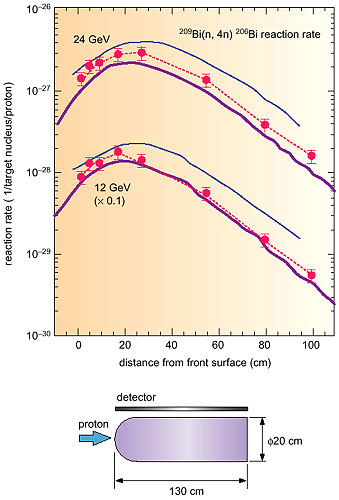In the JAERI - KEK joint project developing the high intensity proton accelerator, design studies are being performed on an intense pulse spallation neutron source and experiment facility for the reaction of an elementary particle with a nucleus, driven by the high energy proton beam. On the design of these facilities, it is required that the production of particles such as neutrons, protons and pions in the target, and the transport process through surrounding structure including secondary neutron production and their energy losses, should be accurately calculated. To predict precisely the reaction and transport of high energy particles, the high energy particle cascade-transport simulation code is often used. However the upper limit of the applicable energy of an incident particle had been restricted to 3.5 GeV in the currently-used code. The new intra-nuclear cascade model developed in JAERI, taking into accounts all reactions of particles such as hadrons and partons, which correspond respectively to quarks and gluons, in the energy range up to 200 GeV, was introduced in the current code. In addition, the recently upgraded data were also incorporated into the cross sections and angular distribution of elastically scattering of nucleons below 3.5 GeV in the code.
We performed the high energy proton beam experiment to evaluate the calculation accuracy of the improved code, NMTC/JAM. The cylindrical target (diameter 20 cm) filled with mercury, was bombarded by proton beams with incident energies of 12 GeV and 24 GeV. The neutron reaction rates on the side surface of the target have been measured by activation detectors and compared with calculated data. As seen in Fig. 5-3, the distribution of 209Bi(n,4n)206Bi reaction rates from the measured data shows better agreement with those computed by NMTC/JAM than those computed by the other code. Similar good agreements were also observed for the case using another type of detector. The results are apparently attributed to the improved accuracy of the prediction, based on the above upgrade of the calculation model in NMTC/JAM. It is expected that this code can be used as a very powerful tool, for example, in engineering applications like the design study of a high energy particle accelerator facility. |

